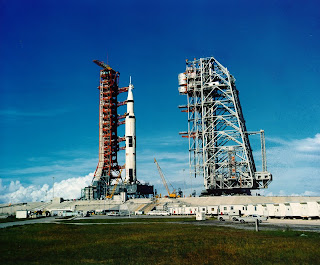 A South Korean student uses binoculars to watch the longest solar eclipse of the century from the ground of Yonsei University in Seoul. The phenomenon, which occurs when the moon passes between the sun and the Earth, lasted over two hours and 40 minutes.
A South Korean student uses binoculars to watch the longest solar eclipse of the century from the ground of Yonsei University in Seoul. The phenomenon, which occurs when the moon passes between the sun and the Earth, lasted over two hours and 40 minutes.  Visitors gather to watch the solar eclipse in Hangzhou, China eastern Zhejiang province, Wednesday, July 22, 2009. Millions of Asians turned their eyes skyward Wednesday as dawn suddenly turned to darkness across the continent in the longest total solar eclipse this century will see. Millions of others, seeing the rare event as a bad omen, shuttered themselves indoors.
Visitors gather to watch the solar eclipse in Hangzhou, China eastern Zhejiang province, Wednesday, July 22, 2009. Millions of Asians turned their eyes skyward Wednesday as dawn suddenly turned to darkness across the continent in the longest total solar eclipse this century will see. Millions of others, seeing the rare event as a bad omen, shuttered themselves indoors. The sun is covered by the moon during a total solar eclipse in the Indian city of Varanasi. The longest solar eclipse of the 21st century plunged millions across Asia into temporary darkness on Wednesday, triggering scenes of religious fervour, fear and excitement in India and China.
The sun is covered by the moon during a total solar eclipse in the Indian city of Varanasi. The longest solar eclipse of the 21st century plunged millions across Asia into temporary darkness on Wednesday, triggering scenes of religious fervour, fear and excitement in India and China.
A partial solar eclipse is seen behind the Golden Temple, Sikhs holiest shrine, in Amritsar, India, Wednesday, July 22, 2009. Millions of Asians turned their eyes skyward Wednesday as dawn suddenly turned to darkness across the continent in the longest total solar eclipse this century will see. Millions of others, seeing the rare event as a bad omen, shuttered themselves indoor










































